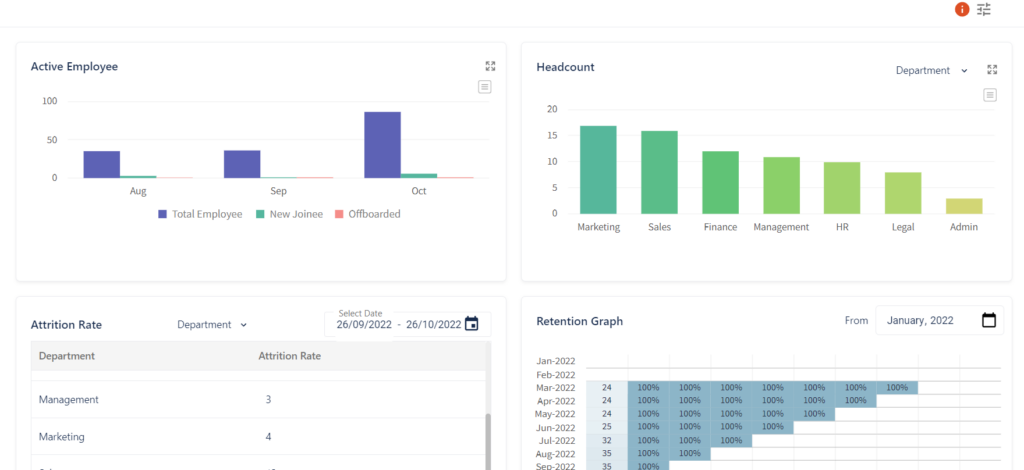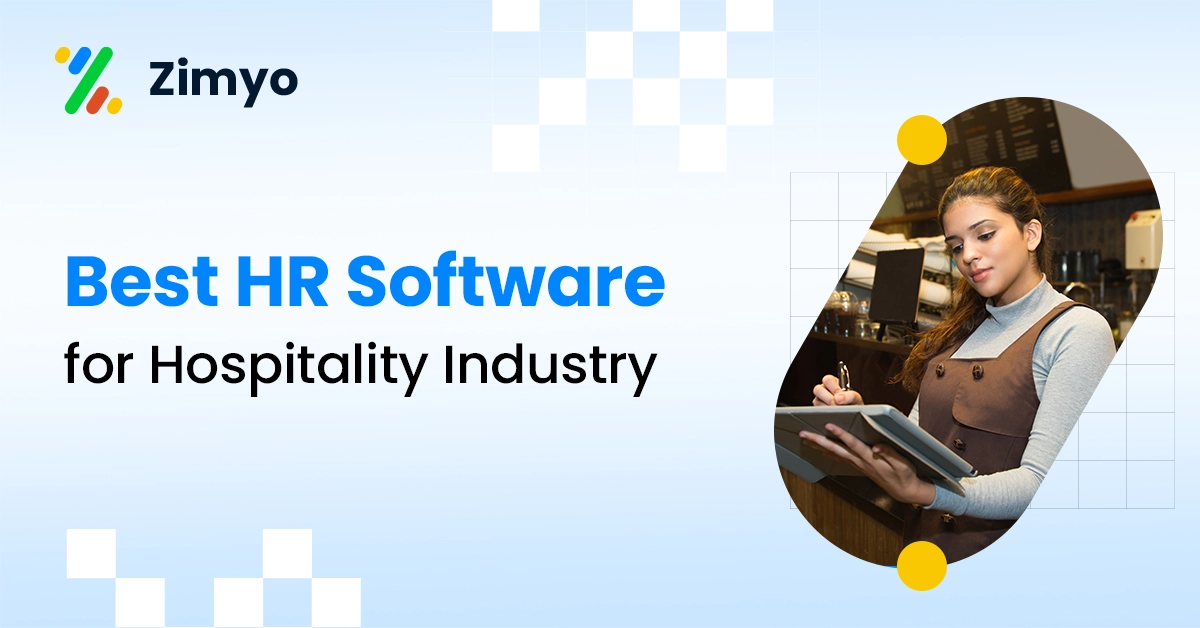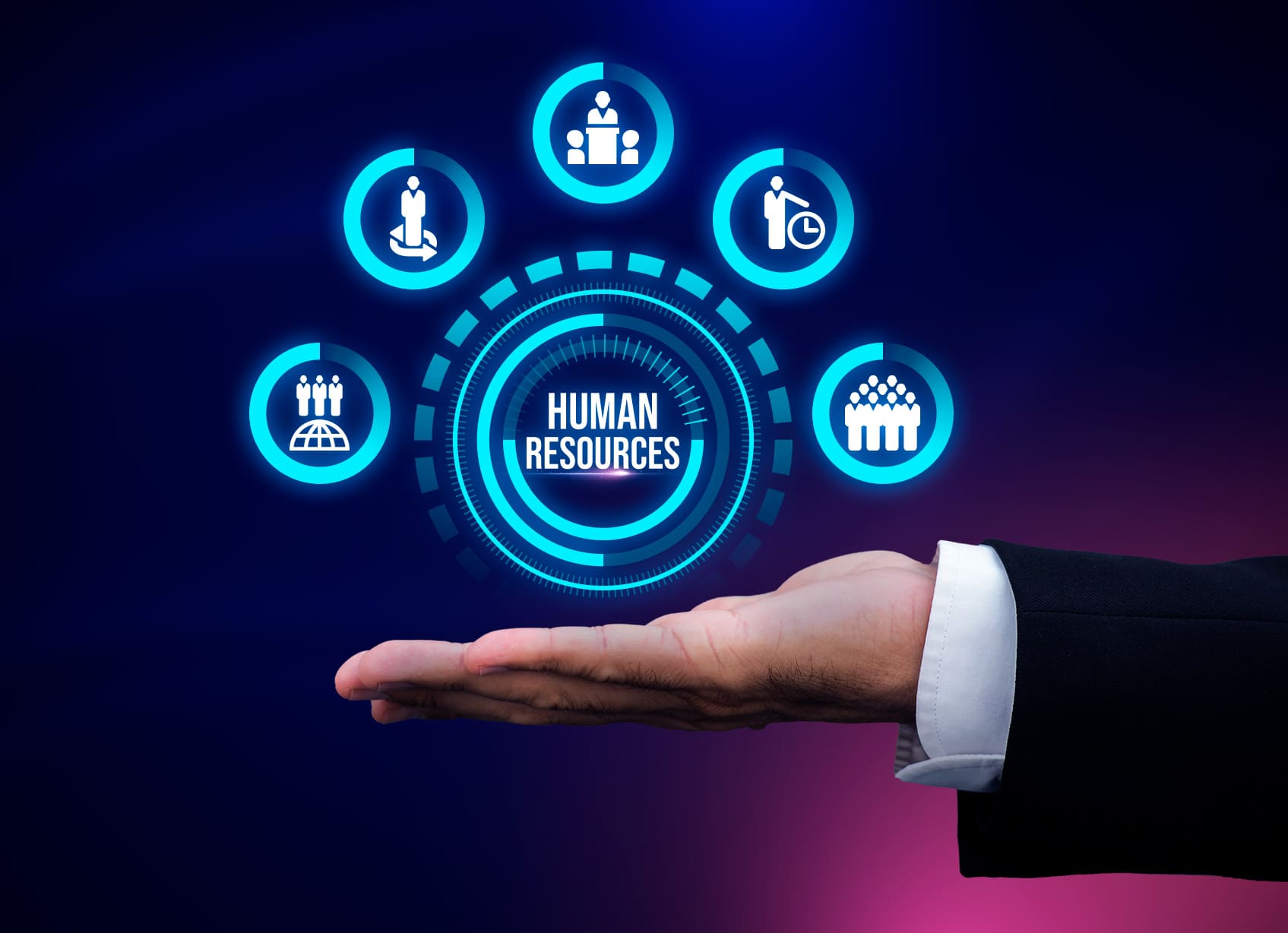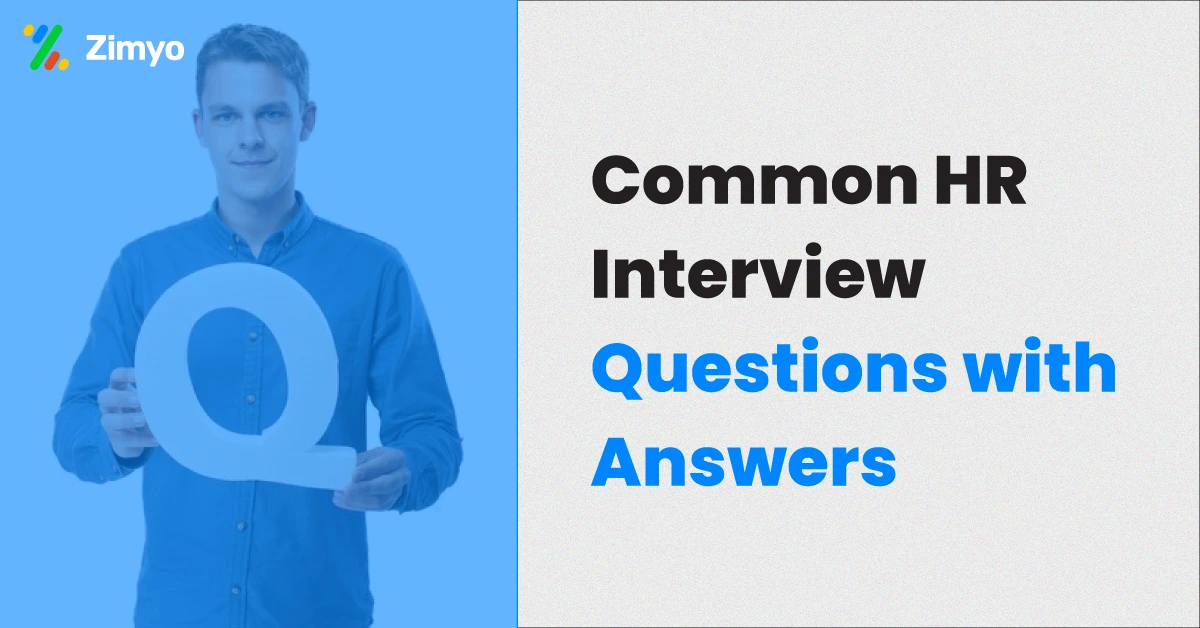The HR dashboard is a specific way to visually represent essential human resources (HR) metrics and data. It presents information in an easy-to-understand format. This tool offers HR professionals and management a complete understanding of HR-related data, so they can make well-informed decisions and keep track of the success of HR strategies.
HR dashboard generally includes a collection of charts, graphs, and other visual elements that display HR data in real-time or periodically updated intervals. The HR dashboard may display different metrics and data depending on what an organization needs, but some common parts include the following:
- Workforce analytics: HR System provides details on the workforce, such as the number of employees, their demographics, turnover rates, and performance metrics.
- Employee engagement: It helps to measure employee satisfaction, morale, and engagement levels, such as employee feedback, survey results, and participation in programs or initiatives.
- Performance management: It gives information regarding employee performance, such as performance reviews, goal attainment, and individual or team performance metrics, is available.
- Training and development: It provides detailed information on employee training programs, such as completion rates, skill enhancement, and certifications.
- Compliance and legal metrics: It helps to track compliance with employment laws, regulations, and company policies, including metrics related to diversity and inclusion, workplace safety, and legal compliance.
Key Function of an HR Dashboard
Here are the key functions of an HR dashboard explained in simple points:
- Centralized data: An HR dashboard is the main intersection for all human resources-related information, offering a single, accurate data source for HR professionals and management.
- Visual representation: The dashboard displays HR information using visual aids, such as charts and graphs, which makes it effortless to understand and analyze.
- Monitoring and tracking: HR professionals can track key metrics and indicators in real-time or periodically.
- Data-driven decision-making: A dashboard designed for HR helps make data-driven decisions by providing analysis and insights derived from HR metrics and trends.
- Performance evaluation: Tracking performance metrics helps evaluate the effectiveness of HR initiatives, programs, and strategies.
- Identification of trends and patterns: On the dashboard, you can see the titles of trends, practices, and correlations related to different HR metrics. It can give you important insights.
- Strategic workforce planning: It helps strategic planning by providing data on workforce demographics, turnover rates, and other metrics for effective workforce management.
- Communication and transparency: The dashboard improves communication and transparency by presenting a simple overview of HR data to share with stakeholders.
- Operational efficiency: It helps identify operational inefficiencies, stoppages, or areas requiring intervention, helping HR professionals to optimize HR processes
- Goal alignment: The dashboard helps align HR strategies with organizational goals by tracking metrics showing progress towards achieving those goals.
- Proactive issue identification: By keeping an eye on the HR metrics displayed on the dashboard, you can detect potential problems at an early stage and take action to resolve them proactively.
- Performance tracking and benchmarking: With the dashboard, you can track your HR metrics and compare them against industry standards or your internal goals. It’s a great way to observe your improvement over time.
Key Metrics for HR Dashboard
Here are five key metrics for an HR dashboard:
- Employee Turnover Rate: This metric calculates the percentage of employees who leave the company within a specific timeframe. High turnover rates can indicate issues with retention, employee satisfaction, or organizational culture. It helps HR professionals identify areas for improvement and implement strategies to enhance employee engagement and retention.
- Time-to-Hire: It helps to track the average time taken to fill open positions within the organization. A long time to load can show inefficiencies in the recruitment process, potentially leading to productivity gaps and increased costs. Monitoring this metric helps HR professionals evaluate recruitment effectiveness, identify stoppages, and execute measures to streamline the hiring process.
- Employee Engagement Score: This metric measures employee engagement, satisfaction, and organizational commitment. It often involves conducting surveys or assessments to gather feedback from employees. A high engagement score suggests a positive work environment and motivated workforce, which can lead to higher productivity and lower turnover rates. HR professionals can use this metric to identify areas where improvements can be made to enhance employee engagement.
- Training and Development ROI: It helps to evaluate the return on investment (ROI) for training and development initiatives. It compares the costs incurred for training programs with the resulting benefits, such as increased employee performance, improved skills, or enhanced productivity. By measuring the ROI, HR professionals can evaluate the effectiveness of training programs and make data-driven decisions regarding training investments.
- Diversity and Inclusion Metrics: These help to evaluate the presentation and inclusion of diverse levels within the organization. It includes tracking data related to gender, nationality, age, and other demographics to assess diversity efforts. HR professionals can use these metrics to identify gaps, set goals, and develop strategies to foster an inclusive and diverse workforce. Monitoring diversity and inclusion metrics can help create a more equitable and inclusive work environment.
- Attrition Rate: This metric helps HR professionals to spot patterns, create plans to keep employees on board, organize recruitment efforts, analyze expenses resulting from employee turnover, and evaluate employee involvement. This data is essential for effectively managing talent and improving overall company performance.
- Active Employee: Zimyo dashboard displays real-time employee data and can be a valuable tool for professionals to make informed decisions and design effective strategies. This dashboard offers insights into workforce size, productivity, talent identification, and employee engagement. Additionally, it aids in compliance, enables talent management, and promotes employee engagement.
- Retention Graph: A retention graph in HR Software enables HR professionals to track and analyze employee retention rates over time. It helps identify high-risk groups, evaluate the effectiveness of retention initiatives, benchmark against industry standards, and plan proactive strategies to improve employee retention and engagement.
Preview of Zimyo HR Dashboard:

Conclusion
The HR dashboard is a necessary tool for HR professionals and management to represent and analyze crucial HR metrics and data visually. It provides a centralized source of accurate information, enabling data-driven decision-making and monitoring of HR strategies. The dashboard promotes transparency, enhances communication, and facilitates strategic workforce planning by presenting information in an easy-to-understand format. It allows for the tracking of critical metrics, evaluation of performance, and identification of trends and patterns. With its ability to identify operational inefficiencies, proactively manage issues, and align HR strategies with organizational goals, the HR dashboard is an essential asset for optimizing HR processes and driving the success of HR initiatives.






